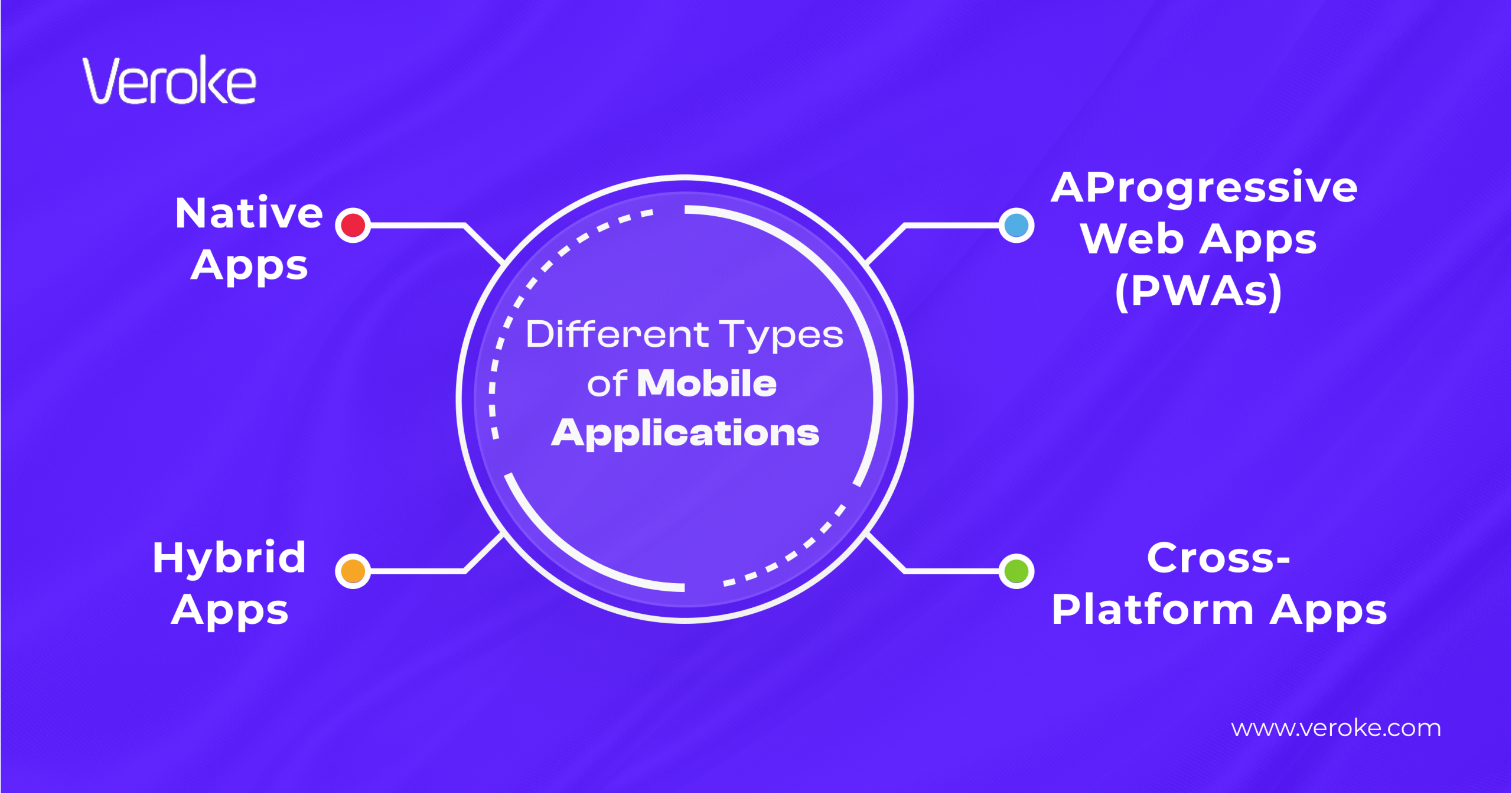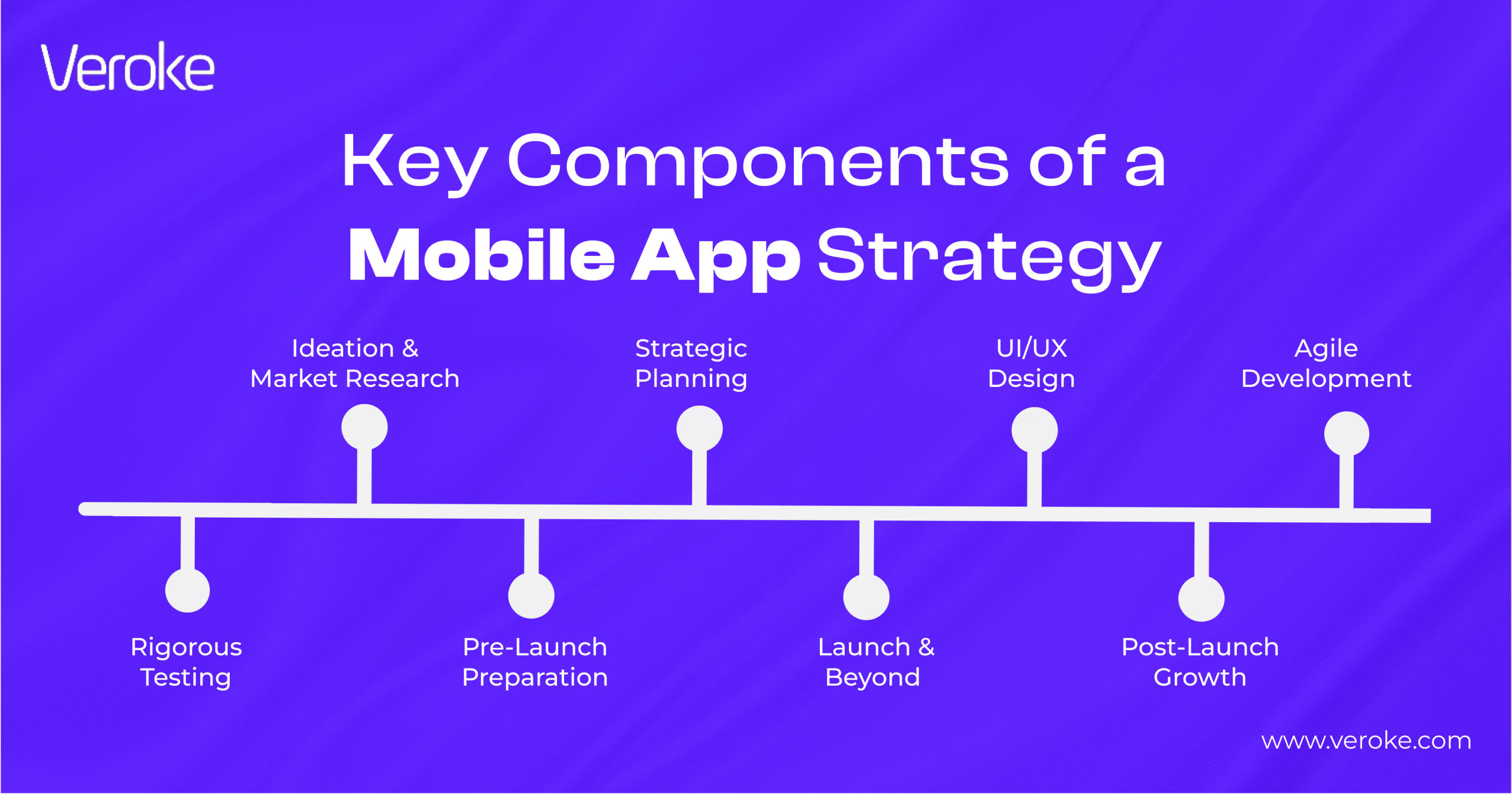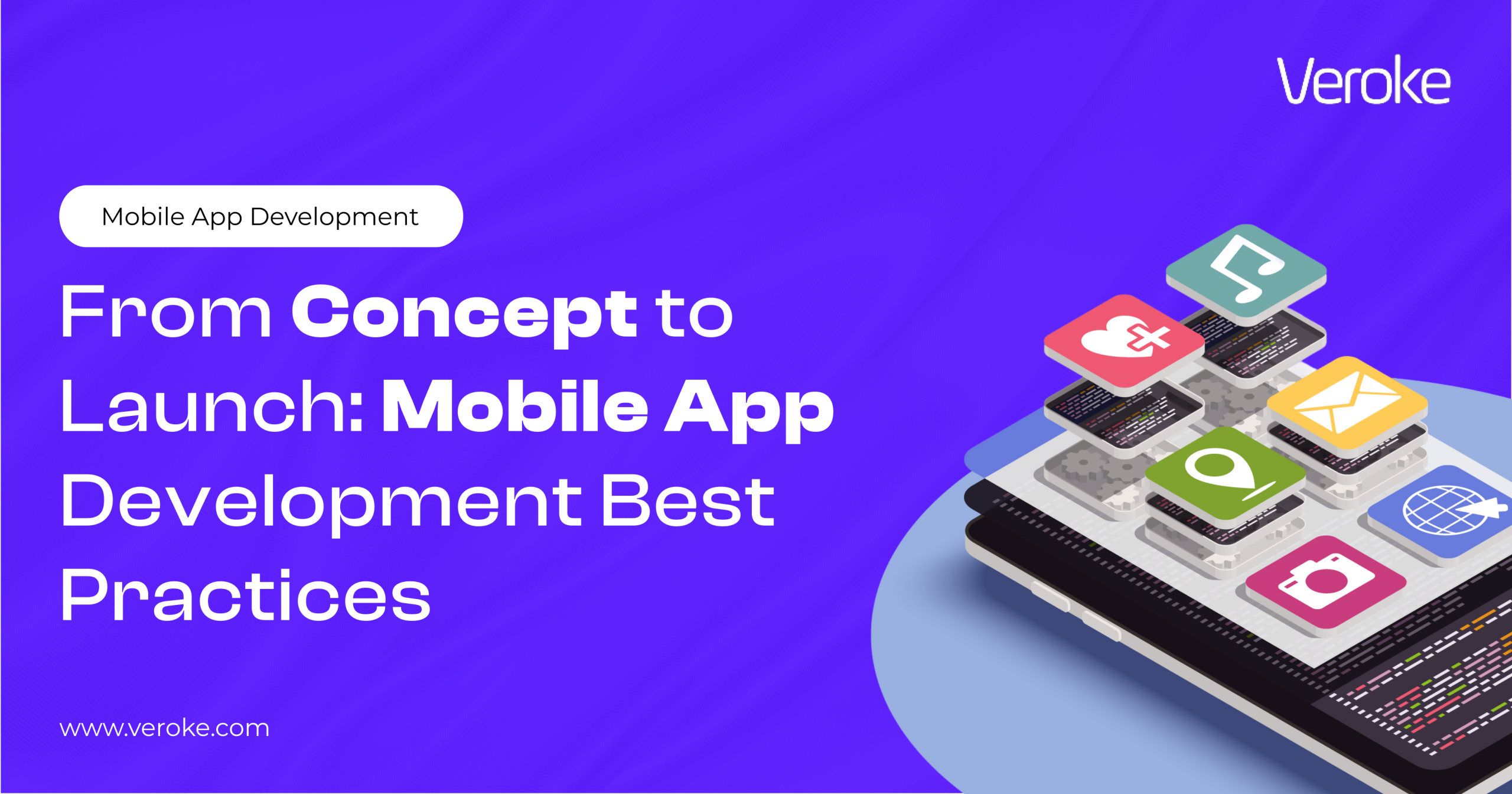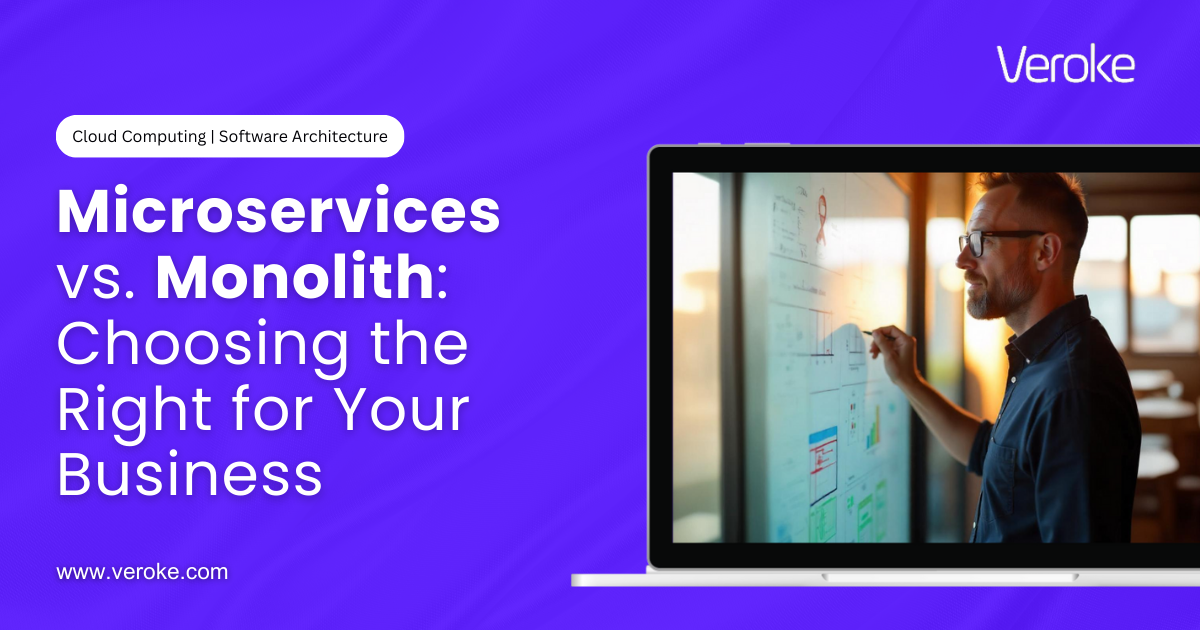Overview
Subscribe to Our Newsletter
Get expert guidance on various topics, resources, and exclusive insights
From Concept to Launch: Mobile App Development Best Practices
Building a successful mobile app goes far beyond writing code; it’s a journey that demands strategic planning, thoughtful design, rigorous testing, and continuous refinement.
Each phase, from initial research to post-launch growth, plays a key role in creating an app that users love and keep using.
With the mobile application market projected to grow at a 13.4% CAGR and reach $187.58 billion by 2030, competition has never been fiercer. In this fast paced world, mobile apps are essential for brand engagement, service delivery, and customer retention.
Yet, while millions of apps launch each year, only a handful truly succeed.
So, what sets the winning apps apart from those that fade away?
Before we dive into the strategies that set successful apps apart, let’s start with the basics, what exactly is a mobile app development?
What Is Mobile Application Development?
Mobile application development is the process of designing, building, testing, and deploying software specifically for mobile devices like smartphones and tablets.
These apps are crafted to meet particular business goals and user needs, delivering functionality and experiences that work seamlessly on the go. Mobile app development spans multiple platforms, primarily iOS and Android, and can follow different development approaches, including native, cross-platform, and hybrid.
Each approach comes with its own pros and cons, so choosing the right one depends on your app’s purpose, features, and audience.
Whether it’s a sleek fitness tracker or a feature-rich e-commerce app, mobile app development is about turning ideas into intuitive, high-performing experiences that fit right in your users’ pockets.
Understanding the Different Types of Mobile Applications
Understanding the different types of mobile applications is essential before you get into development. As this can determine the overall impact, performance, user experience, cost, and development time.
Choosing the right type for your business depends on your project’s goals, target audience, and available resources.

Different types of mobile applications
1. Native Apps
Native applications are built specifically for a single platform, either iOS or Android. Using platform-specific programming languages like Swift for iOS and Kotlin or Java for Android.
They offer the best performance and user experience since they are optimized for the device’s operating system. However, they often require separate development efforts for each platform, which can increase time and cost.
2. Hybrid Apps
Hybrid apps are developed using web technologies like HTML, CSS, and JavaScript and then wrapped in a native container. Frameworks like Ionic or Cordova enable this development style.
While hybrid apps can run on multiple platforms with a single codebase, they may struggle with performance issues compared to native apps.
3. Cross-Platform Apps
Cross-platform apps can be built using frameworks like Flutter or React Native so that a single codebase can be used across all of the iOS and Android platforms.
They strike a balance between native and hybrid apps by offering better performance than hybrid solutions and faster development cycles than native ones.
4. Progressive Web Apps (PWAs)
PWAs are web applications that offer an app-like experience through a browser. They can be accessed via URLs, work offline, and don’t require installation from an app store.
While PWAs are fast and cost-effective to develop, they may lack access to device features and have limited support on certain platforms like iOS.
Key Phases of the Mobile App Development Process
Launching a successful mobile app starts with a well-crafted development strategy. Without a roadmap that connects your features to real user needs and business objectives, even the most promising ideas can stall.
Key Components of a Mobile App Development Strategy include:

Key Components of Mobile App Development Strategy
1. Ideation & Market Research
Every successful app begins with a clear understanding of the problem it aims to solve. This phase is the foundation of your mobile app journey and involves thinking beyond the idea to deeply explore its relevance, potential, and market demand.
Start by identifying the specific problem or need of your app addresses. Define your value proposition clearly: what makes your app necessary? Then, shift focus to your users.
Developing detailed user personas, fictional but data-backed representations of your ideal users, helps align your solution with real needs and behaviors.
Next, scope out the competition. Dive into what similar apps are doing, where they succeed, and where they fall short. This competitive analysis can highlight market gaps and opportunities for differentiation. Finally, validate your idea using low-cost, real-world tests: launch a landing page, send out surveys, or release a basic MVP to gather feedback.
2. Strategic Planning
With a validated idea, it’s time to build a roadmap for execution. Strategic planning is about transforming your vision into a concrete, achievable plan.
Start by setting measurable goals. Do you aim to acquire users quickly, build a loyal customer base, or generate revenue right away? These objectives will shape your development and marketing strategy.
Platform selection is crucial at this stage. Native development offers performance and integration advantages for iOS and Android, but cross-platform frameworks like Flutter or React Native can reduce costs and time-to-market. Choose based on your target audience and available resources.
The success of any project depends on the right tech team. Assemble a skilled team that can execute the vision effectively. Select a tech stack that aligns with your scalability needs and team capabilities.
And don’t underestimate the importance of budgeting, not just for development, but also for testing, marketing, and long-term maintenance. Set realistic timelines, build in buffers, and anticipate potential delays.
3. UX/UI Design
A user-friendly design can make or break your app. UX/UI design is not just about aesthetics or accessibility; it’s about creating an experience that delights users and helps them accomplish their goals effortlessly.
Start with user-centered design principles. Focus on simplicity, clarity, and accessibility. The design should intuitively guide users through the app, reducing cognitive load and friction.
Develop wireframes to outline core screens and flows. Tools like Figma, Sketch, or Adobe XD are excellent for visualizing the app’s structure before committing to development. Move on to interactive prototypes that simulate app functionality, these can be tested with real users to gather early feedback.
Usability testing is critical. Observing how users interact with your design helps uncover friction points and areas for improvement. Iterate rapidly to refine the user experience.
4. Agile Development
Development is where your concept transforms into a tangible product. Embracing agile methodologies allows you to build quickly, adapt to feedback, and continuously improve.
Start by building a Minimum Viable Product (MVP). Focus on delivering the core functionality that addresses your primary use case. This allows you to launch faster, collect data, and iterate.
Use modular, well-documented code to ensure flexibility and ease of scaling. Integrating CI/CD pipelines from the outset will help you automate testing, streamline deployment, and catch issues early.
Agile frameworks like Scrum or Kanban foster collaboration and transparency. Conduct sprint planning, daily standups, and retrospectives to maintain momentum and accountability.
5. Rigorous Testing
Before you release your app to the world, it needs to be bulletproof. Thorough testing ensures your app performs well, delivers a seamless user experience, and maintains data security.
Testing should cover every angle:
- Unit Testing ensures that individual components work as expected.
- Integration Testing checks how these components interact.
- UI Testing verifies that user interactions behave correctly.
- Beta Testing lets real users test your app in real-world environments.
A mix of automated and manual testing yields the best results. Automation accelerates repetitive checks, while manual testing offers insights into user experience and edge cases.
6. Pre-Launch Preparation
As your app nears completion, prepare for a successful debut. This phase is all about visibility, readiness, and user engagement.
Begin with App Store Optimization (ASO). Craft a compelling app name, description, and set of screenshots. Use high-value keywords to improve searchability, and design an icon that grabs attention.
Create a suite of marketing materials. These could include explainer videos, blogs, demo reels, and landing pages that highlight your app’s features and benefits. Build hype through email campaigns and social media teasers.
Use a closed beta to fine-tune performance and gather last-minute feedback. Set up robust analytics platforms like Firebase or Mixpanel to track downloads, user behavior, and in-app engagement from day one.
7. Launch & Beyond
Your app is ready, but the journey doesn’t end here. A well-executed launch is followed by careful monitoring and rapid response.
If possible, opt for a staged rollout. Release to a smaller audience to monitor crashes and performance issues before going fully live. Real-time monitoring tools like Sentry or Bugsnag can help you avoid potential problems.
User onboarding is crucial. The first-time user experience should be smooth, informative, and engaging. Guide new users through key features with tooltips or walkthroughs to reduce confusion.
Encourage feedback by making it easy for users to leave reviews or report issues. Positive ratings boost visibility, while negative feedback offers valuable insights for improvement.
8. Post-Launch Growth
The post-launch phase is where you evolve from having a product to building a thriving user base. Growth depends on listening to your users, refining your offering, and scaling strategically.
Actively collect and analyze user feedback. Look for patterns in behavior and requests. Use this data to guide feature enhancements and bug fixes.
Boost retention with smart engagement strategies. Push notifications, in-app messaging, gamification, and rewards programs can keep users coming back.
As your user base grows, ensure your backend infrastructure scales accordingly. Cloud platforms like AWS, Google Cloud, or Azure can provide the necessary support.
Lastly, track performance using KPIs like Daily Active Users (DAU), Monthly Active Users (MAU), average session duration, and churn rate. Let the data guide your decisions and roadmap.
Why Every Business is Going Mobile-First?
Smartphones are woven into nearly every aspect of our daily routines. We turn to them for shopping, socializing, learning, and entertainment.
For companies, a mobile presence has moved from “nice to have” to nonnegotiable. A well-crafted app bridges the gap between your brand and customers in real time.
Apps deliver unmatched accessibility and engagement. They let you send tailored notifications, capture behavioral insights, and fine-tune your offerings on the fly.
In today’s crowded marketplaces, a standout app can become your most powerful differentiator. But winning users requires more than features—it demands speed, rock-solid reliability, and a delightfully smooth experience.
Whether you’re a scrappy startup or an established enterprise, investing in a mobile-first strategy is a strategic imperative. It’s the best way to stay relevant, foster loyalty, and drive sustained growth.
Key Factors for Success in Mobile App Development
Success in mobile app development hinges on more than a great idea or a beautiful interface, it’s about consistency, usability, and delivering real value to users.
Here are the key ingredients that separate thriving apps from those that fade into digital obscurity:
➢ User-Centric Approach
Understanding and prioritizing your users’ needs is the most crucial thing to consider. Mobile apps must solve a specific problem or provide tangible value.
Deep user research and persona development ensure your solution aligns with real behaviors and preferences.
➤ Performance and Reliability
Users expect fast, smooth, and crash-free experiences. Slow load times or technical glitches can result in instant app abandonment.
Optimize performance and invest in rigorous testing to guarantee stability and responsiveness.
➢ Intuitive Design
Great UI/UX isn’t just visually appealing, it should guide users naturally and make interactions effortless.
So, try to keep interfaces clean, navigation logical, and actions predictable to reduce friction.
➤ Security and Privacy
Apps often handle sensitive user data. Prioritize data protection through encryption, secure authentication, and compliance with privacy regulations.
Trust is a critical driver of retention, so focusing on the security and privacy standards can improve the overall experience.
➢ Scalability
Think beyond the MVP. A scalable architecture ensures your mobile app can grow with your user base without compromising performance.
Plan a modular codebase, cloud-native infrastructure, and scalable databases that let your app evolve smoothly as your user base grows.
➤ Analytics and Feedback Loops
Integrate tools to track user behavior and in-app metrics. Combine quantitative insights with qualitative feedback to continuously refine and improve the app experience.
Fuse these quantitative insights with qualitative feedback—surveys, reviews, and in-app prompts—to fuel continuous refinement and deliver a better user experience.
➢ Marketing and User Acquisition
Even the best app won’t succeed without visibility. Plan your marketing strategy early. Leverage ASO, content marketing, social media, and paid ads to attract and retain users.
With these elements working together, your app is highly likely to launch successfully and grow sustainably in a competitive market.
Final Words
Creating a successful mobile app isn’t about luck, it’s about planning, execution, and continuous improvement. From the moment inspiration strikes to the day you hit “publish” and well beyond, every phase matters.
Whether you’re a startup founder or a product manager leading your next big project, following these best practices can make the difference between an app that thrives and one that flops.
At Veroke, we understand that every great app begins with a clear vision and succeeds through expert execution. Throughout the mobile app development lifecycle, our team of experienced developers, designers, and strategists works with you from ideation to launch.
Whether you need full-cycle development or just a boost to your in-house team, we’ve got you covered.
Let’s bring your mobile app idea to life with precision, innovation, and a user-first approach. Contact us today and let’s build something extraordinary together.
FAQs
1. What is the best way to develop a mobile app?
Begin by defining your mobile app development requirements—user needs, core features, and business goals—and sketching a modular mobile app (native or cross-platform). Then follow an agile cycle: design UX, build an MVP, test rigorously, and refine post-launch, leveraging expert mobile app development services at each phase.
2. What is application development practice?
It’s the repeatable, structured workflow that takes you from requirements and architecture through UI/UX design, agile development, testing, and launch prep.
By embedding best-in-class mobile app development services—like CI/CD, automated tests, and usability feedback—you deliver quality apps faster and more reliably.
3. What are the 3 most important things you would consider when developing a mobile app?
Here are 3 things to consider when developing a mobile app.
Clear requirements—Define your mobile app development requirements early: user personas, feature set, regulatory constraints, and success metrics.
Scalable architecture—Choose a mobile app development architecture (native, cross-platform, or microservices-based) that supports growth, performance, and maintainability.
Ongoing services—Partner with experienced mobile app development services to ensure robust coding, comprehensive testing, and reliable deployment. Integrate analytics and user feedback loops to iterate and improve the experience.
Transform your Ideas into a Digital Reality
Get customized bespoke
solutions for your business.



